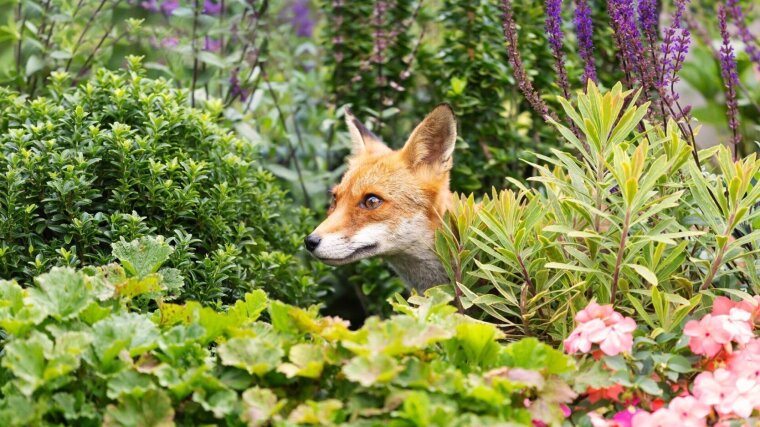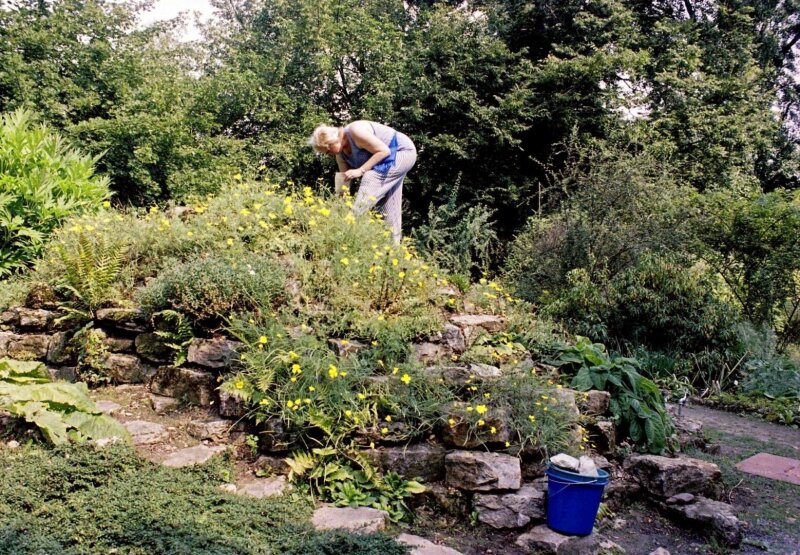
Published: | By: Antonia Sladek
Source article
Many people are currently preparing their gardens for winter: according to the gARTENreich project, there are 16.6 million private gardens in Germany. They cover two per cent of German territory and can make an important contribution to biodiversity. The website www.gartenreich-projekt.deExternal link (German only) encourages garden owners to consciously promote species conservation: Explanatory films, fact sheets for native plants, instructions for habitat structures and a guidebook help with nature-orientated gardening. Local authorities can also use the materials to support their residents. The gARTENreich project was funded by the Federal Ministry of Education and Research (BMBF).
Autumn garden care: tips for protecting insects and small animals
When it gets cold, insects and small animals hibernate in the garden. In addition to piles of leaves, flower stalks that have withered, for example, are popular harbourages. The researchers recommend that you should only cut back as much of the faded perennials as is absolutely necessary for aesthetic purposes. Late autumn is also a good time to plant native shrubs or fruit trees. The interdisciplinary research project gARTENreich has compiled these and many other tips for more nature in the garden.
Why privet is better than thuja
"The tender responds to a very central obstacle in nature-oriented gardening, namely gaps in knowledge," says Jessica Rusch from NABU (Nature and Biodiversity Conservation Union Germany) e. V. "When buying plants, it is often not clear that privet or wild roses benefit significantly more animals than cherry laurel or thuja." Birds, for example, benefit from a free-growing privet or wild rose hedge as they find food and shelter there.
With the help of the videos and step-by-step instructions, you can start remodelling part of your garden straight away without any prior knowledge. The plant profiles , for example, are also useful for advanced gardeners who want to go one step further towards a natural garden.
Self-test for biodiversity in your own garden
For the project, gardeners in Gütersloh and Aumühle worked with researchers to transform their gardens into diverse habitats. "The result is simple to sum up," says project manager Dr Alexandra Dehnhardt from the Institute for Ecological Economy Research (IÖW): "The more different structures there are in the garden - such as piles of dead wood, wild herbaceous beds and native shrubs - the greater the diversity of plants and animals." Overall, gardens in Germany tend to be in the midfield - compared to what would be feasible, says Dehnhardt. A self-test based on a specially developed biodiversity index reveals how well your own garden is set up.
Private gardens have more area for biodiversity than all German national parks
In order to assess the condition and potential of gardens, the institution of higher education in Berlin (HWR Berlin) conducted a nationwide survey under the direction of Dr Tobias Börger, Professor of Environmental, Energy and Resource Economics. On this basis, the IÖW determined for the first time a well-founded estimate of how many private gardens there are in Germany. The number of gardens around private homes - excluding allotment gardens - is 16.6 million. Their total area is therefore larger than all the national parks in Germany combined.
The gARTENreich project offers extensive information on the topic of nature-orientated gardening so that gardening can also promote species conservation.
Image: Universität Jena"Private gardens offer varied structures in the smallest of spaces and serve as refuges for animals, also bridging the way to larger habitats. It therefore makes a noticeable difference to biodiversity whether gardens are designed to be close to nature or not," emphasises ecologist Esther Felgentreff from Friedrich Schiller University Jena.
Natural gardens: promote or prescribe?
The extinction of species is accepting threatening proportions. Nevertheless, many local authorities do not believe that banning lifeless "gravel gardens" is a solution - especially as there is a lack of staff to monitor such regulations. Instead, local authorities can set a good example in public green spaces, raise interest and provide information.
As a partner in the project, the city of Gütersloh has had good experiences with target group-specific tenders: "Campaigns that get people talking about biodiversity who have not previously been very interested in the topic are particularly effective. We have given away seed packets, sponsored fruit trees and soil analyses with fertiliser advice for gardens and were thus able to reach citizens well," says Gisela Kuhlmann, environmental consultant at Gütersloh City Council.
Local authorities can use the project's information materials to provide support: "For example, cities could raise awareness in new development areas so that owners make informed decision from the outset," adds project manager Dr Alexandra Dehnhardt.
About the project
In the gARTENreich project, researchers and private gardeners used sample gardens and surveys to develop strategies and information materials for designing nature-orientated gardens. The interdisciplinary team included experts from the Institute for Ecological Economy Research (IÖW), NABU (Naturschutzbund Deutschland) e. V., NaturGarten e. V., Friedrich Schiller University Jena, the institution of higher education in Berlin, the city of Gütersloh and the municipality of Aumühle. The project was funded by the Federal Ministry of Education and Research as part of the Research Initiative for the Conservation of Biodiversity (FEdA).

